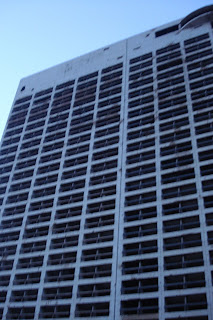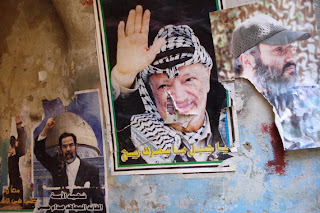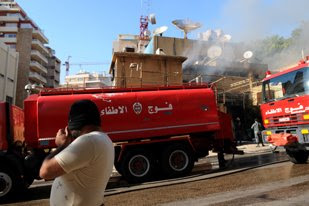‘The Central Fire’: History and the Predicament of Critique
Gene Ray
Is it all the fault of the system? Systems are such heavy chains that they exonerate the infinitesimal individual, the thinking reed, the trampled reed. What would Pascal or Spinoza have done in Dachau? Or at the front, under a helmet? The reed stops thinking, becomes malleable matter, identifies with its chains.
– VICTOR SERGE, UNFORGIVING YEARS
Practices of critique take many forms today and look back to numerous sources and inspirations. These forms can diverge in what each takes to be the objects, functions and methods of critical practice. This much was quickly established at the conference “The Art of Critique,” organized by the EIPCP in Vienna. Over two days in April, ten writers and theorists from the fields of philosophy, political science and sociology presented and discussed papers aiming to “problematize the meanings of critique that have been developed for centuries” and to explore such new forms and conceptions as “atopical critique” (Hakan Gürses), “embodied critique” (Marina Garcés), “counter-hegemonial intervention” (Chantal Mouffe), and resistance or “exodus” (Gerald Raunig, Maurizio Lazzarato, Isabell Lorey). The conference grew out of EIPCP’s developing Transform project and Transversal web journal, which have been oriented toward the rethinking and renewal of forms of institutional critique. In this context, it becomes ever more imperative to clarify the possibilities of critical practices adequate to contemporary conditions, and the conference follows up on an August 2006 issue of Transversal on the theme of critique.
The gathering took place in the gallery space of the Kunsthalle Exnergasse in the WUK complex, appropriately enough surrounded by the exhibition “Have Your Cake and Eat It, Too.” Co-curated by Charlotte Martinz-Turek and Luisa Ziaja, and featuring the work of Zanny Begg and Oliver Ressler, Chto delat?, Marcelo Exposito and Nuria Vila, Bini Adamczak and Persson Baumgartinger, among others, the exhibition aimed to make concrete EIPCP’s notion of institutional critique as “instituent practice.” The mix was a stimulating and felicitous one; probing and inventive, the conference contributions provoked spirited responses and a few sharp exchanges. Impressively organized and well-attended, the event was a model of focused critical culture produced beyond the usual sites of museum and university.
Asked by the organizers to respond to the conference as a whole, I will try in what follows first to remark some of the larger streams of critical thinking in play in and across the papers presented. This kind of initial mapping may be less than satisfying, insofar as it necessarily fails to do justice to the richness and singularity of the ten contributions, each of which deserves and calls for a singular response. But this approach will at least provide a needed opening to some general reflections and remarks on the places and predicaments of critique today. These obviously have to do with the constraints imposed by the historical moment, as well as what can still be called the current “conjuncture.” It would be wrong to say that the contributors were unconcerned to specify this historical context. Indeed some – notably Marina Garcés, Chantal Mouffe and Maurizio Lazzarato – explicitly tried to do so. But I find myself uneasy with the characterizations offered and will try in this essay to discover the reasons for this discomfort. If this critical reflection fails to invent another new form of critique, it will at least make an attempt to clarify the historical problem that a transformative critical project must still address today.
Three Streams of Critique
The names most cited by the conference participants, both in their papers and in the discussions that followed, were Foucault, Marx and Adorno – more or less, if I’m not mistaken, in this order. Less often cited but still massively present were the names Gramsci and Deleuze and Guattari. Impressionistic as these observations are, they do I think accurately reflect the main theoretical landmarks informing the conference and the assumptions behind it. Without of course implying that the papers presented can be reduced to or merely identified with the sources that inspire them, it is possible to recognize at least three distinct streams or general tendencies of critical thought emerging from these names, as they bear on the question of critique as such.
The first would be constituted by Foucault’s reflections on power, resistance and governmentality, especially in the 1978 lecture and essay “What Is Critique?” – and especially as mediated through Judith Butler’s 2002 reading of Foucault’s text.[1] Foucault’s re-conception of critique looks back to Kant’s critical project of “knowing knowledge” and in particular the task of knowing its limits and boundaries. If for Kant critique “suspends judgment” in a first moment, in order to assess what can and cannot be known of its objects, it is only in order, in a second moment, to reach a more rigorous judgment within the proper limits of what Foucault calls a “regime of truth.” In contrast, Foucault was interested precisely in practically transgressing the epistemological horizon of knowledge set by a Kantian approach. Instead of recuperating critique into a higher and more authoritative form of judgment, Foucault wanted to go beyond all established authority and open up new forms of practice – new arts or technês of self-production and transformation.
In terms of his paradigm of biopower and governmentality, Foucault’s notion of critique is the practice that answers the question “how not to governed like that... not like that, not for that, not by them.” For Foucault, forms of governmentality produce corresponding forms of subjectivity; governmentality remakes individuals into specific kinds of subjects. The relation between “government” (les gouvernants) and the governed (les gouvernés) can be external, as in the legalized operations of a government or state, or internalized and embodied, insofar as an individual practically accepts an established regime of truth as the real horizon of possible thinking and acting. Critique is the thinking that accompanies forms of a “desubjugation” of the subject of governmentality and its operative regime of truth – a de-linking or evacuation from the government/governed relation, and thus from the domination implicit in this relation. Critique, in this sense, opens the way to a desubjugated form of practice.
This Foucauldian notion of critique of is explicitly endorsed by Gerald Raunig, who links it to the Deleuzean trope of the “machine.” Clearly legible in the published announcement of the Vienna conference, it also informs, to varying degrees, the contributions of other participants – notably those of Lazzarato and Isabell Lorey and, pushed specifically in the direction of more embodied modes of being, feeling, thinking and acting, those of Marina Garcés and Patricia Purtschert.
A second stream would be oriented more directly toward the Marxist tradition and Frankfurt critical theory. For this tradition, the transformation of society as a totality remains the ultimate object of critical theory and radical political practice. Even if indirectly, critical theory supports the practical struggle to go beyond capitalism as a global system of exploitation and domination, and for this reason critique must remain concerned with the strategic problems of recomposing the dispersed local struggles of micro-politics into an organized agency capable of a global displacement of capitalist power. There is a difference, after all, between an individualized practice and one that is organized and strategically collective. For this stream, dialectics remains a potent form of critical thinking, even if this dialectic is now a negative one rather than the basis for a mythical automatic progress. In Vienna, Alex Demirovic spoke eloquently for this tradition, which was also endorsed by Karl Reitter and, in some respects, by Hakan Gürses.
The third stream would flow from the “post-Marxist” revision of the second stream carried out by Chantal Mouffe and Ernesto Laclau in their 1985 book Hegemony and Socialist Strategy.[2] This work, which informs and inspires various “discourse analysis” approaches to politics, sees society as a field of irreducible antagonism, over which order is installed as a contingent and necessarily unstable “hegemony” through specific articulations of discourses and practices. Mouffe and Laclau reject the goal, traditional in orthodox Marxism, of a society reorganized to eliminate antagonism and social conflict once and for all; for them, there can be no such thing, for every society must impose order through a new hegemonic articulation. Socialism would be no different in this regard, and Mouffe and Laclau try to rethink socialist strategy accordingly.
....
more on
http://transform.eipcp.net/correspondence/1210933646A response to eipcp's conference "The Art of Critique", held in April 2008. The texts of the conference themselves will be published in two upcoming issues of the web journal transversal in August and
November 2008.


















